Abstract
Four hundred and seventy tuberculosis patients were each skin tested with four of a range of 17 mycobacterial reagents in four countries in all of which tuberculosis and leprosy were endemic. Sixteen of the reagents were new tuberculins prepared from extracts of living mycobacteria disrupted by ultrasonic disintegration and the last was PPD, RT23.
The effect that tuberculosis exerted on the delayed-type skin test response to these antigens was assessed by comparing results for tuberculosis patients with those for Tuberculin positive and Tuberculin negative control populations. Tuberculosis patients on Rifampicin therapy showed no difference in their skin test responses to any of the antigens from those patients on other forms of antituberculosis treatment.
Amongst the normal population it was found that possession of Tuberculin positivity was associated with an enhanced response to all the other mycobacterial antigens with the exception of A*-in which demonstrated a reciprocal relationship with Tuberculin in Burma. It was also noted, in Burma particularly, that sensitization to mycobacterial species other than Mycobacterium tuberculosis, especially to the slow growers, plays a role in determining responses to different mycobacterial species.
In tuberculosis patients enhanced skin test responses were also seen but only in those countries, e.g. Libya, where the prevalence of mycobacterial species was low. Where mycobacteria were common, as in Burma, the converse was true and tuberculosis was associated with a diminished skin test response to each antigen. The high prevalence of A*-in positivity in Burma, its reciprocal relationship with Tuberculin there and the results for all the antigens in the tuberculosis patients indicate that the cell mediated skin test response may have a threshold. If this is exceeded the skin test becomes negative so that non-reactors then include those who have been excessively sensitized as well as those who have not been sensitized. Despite this, a greater percentage of tuberculosis patients in each country responded to the specific reagent Tuberculin than did the control populations and their mean positive induration sizes were consistently larger. Nevertheless, amongst the tuberculosis patients in Burma 13% were complete non-reactors to Tuberculin and this apparent anergy also applied to the other reagents with which these individuals were tested.
This differs from lepromatous leprosy where the anergic state pertains exclusively to M. leprae and a few seemingly closely related species. The breadth of anergy in M. ulcerans infection has not been measured but it is known to effect both Burulin and the PPD, RT23.
Just as in leprosy and M. ulcerans infection, tuberculosis can be shown to have a disease spectrum here detected by multiple skin testing. The significance of this spectrum and its similarities with and differences from that of the other mycobacterioses is discussed.
Full text
PDF
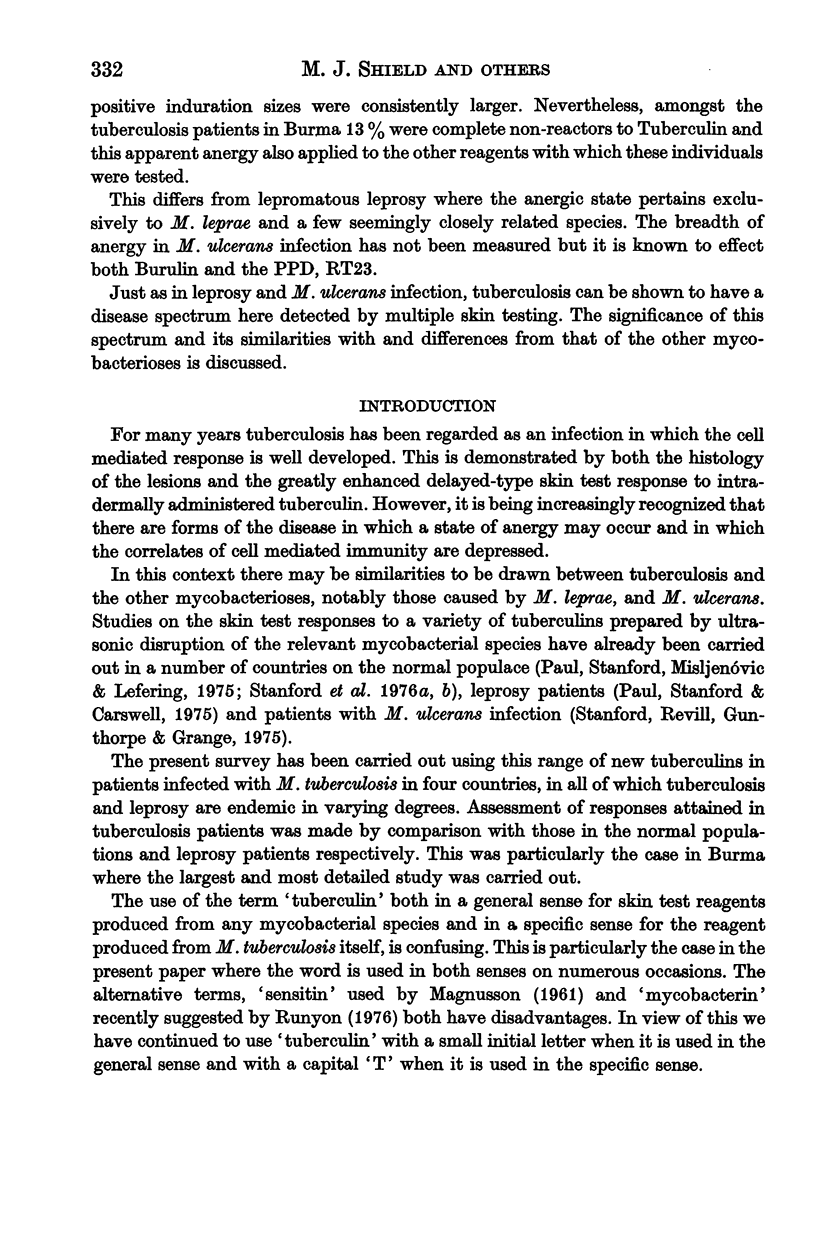

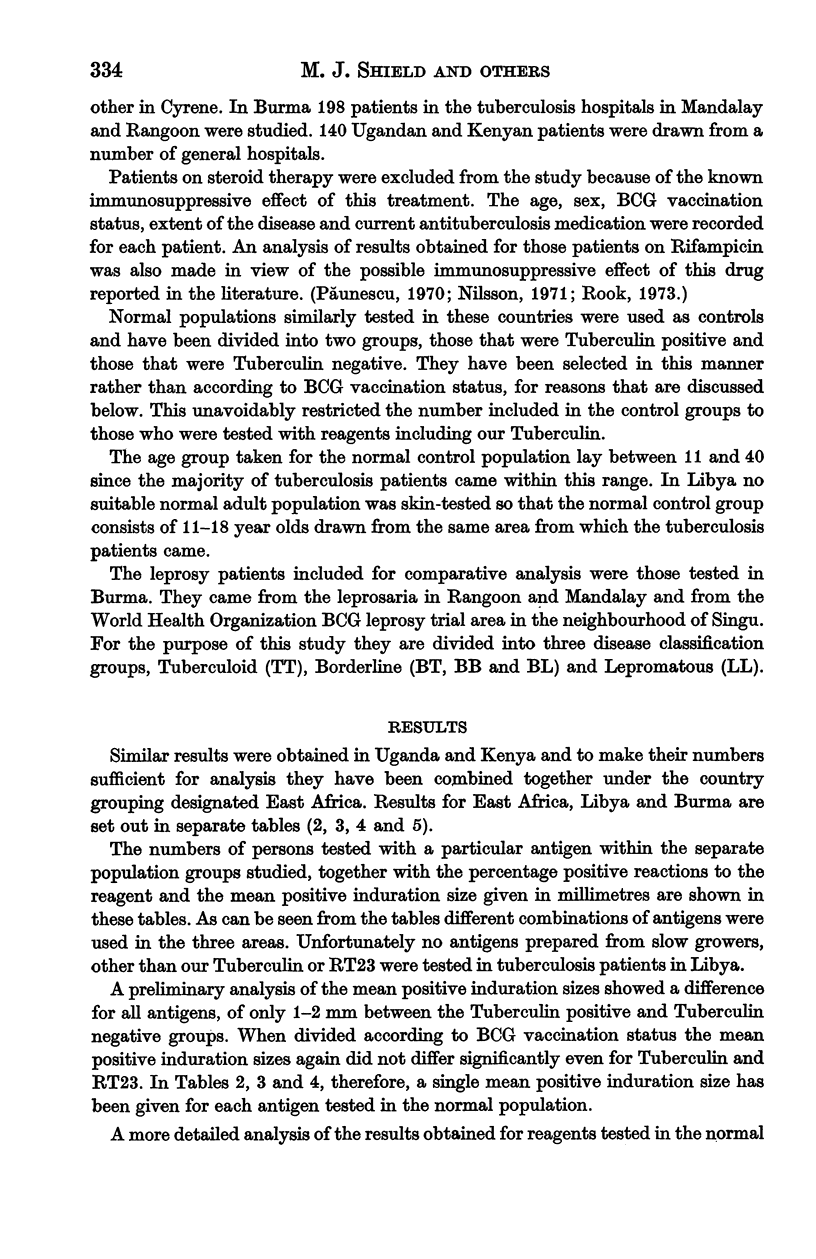
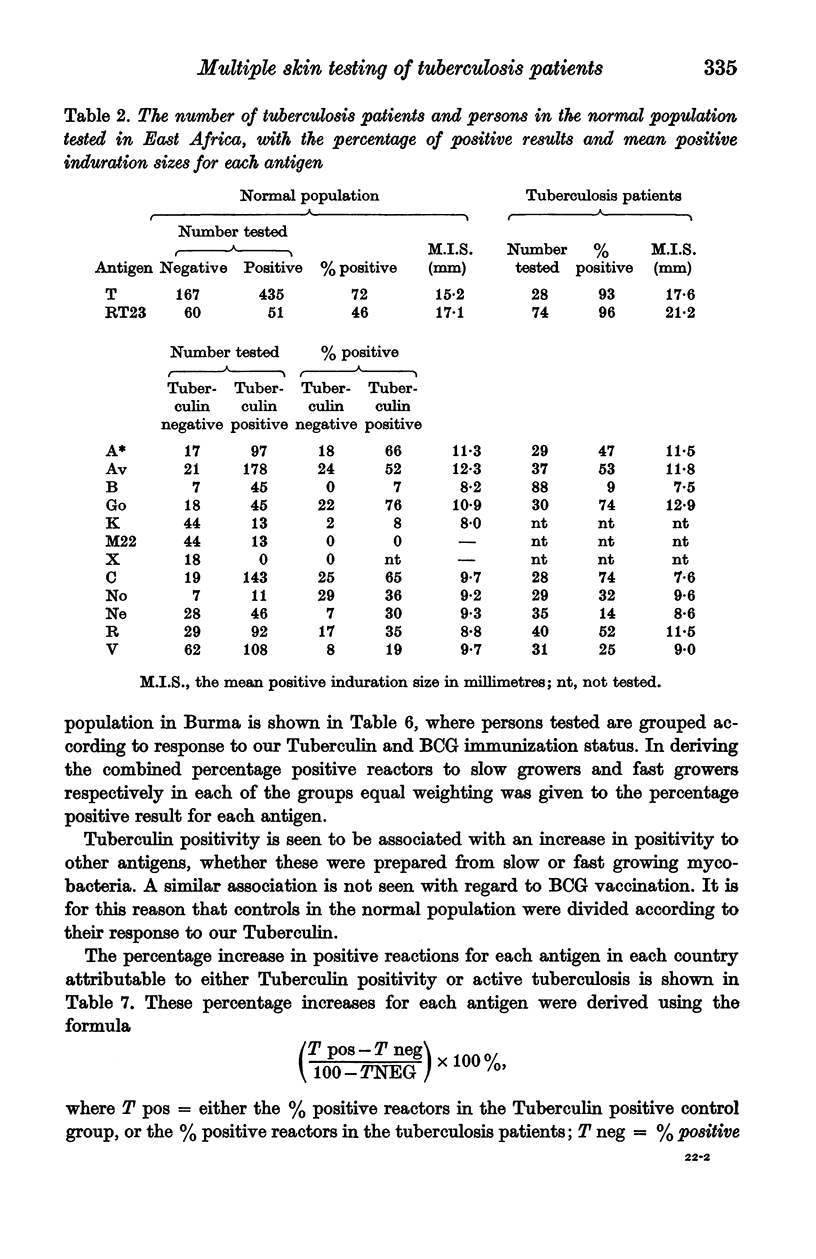
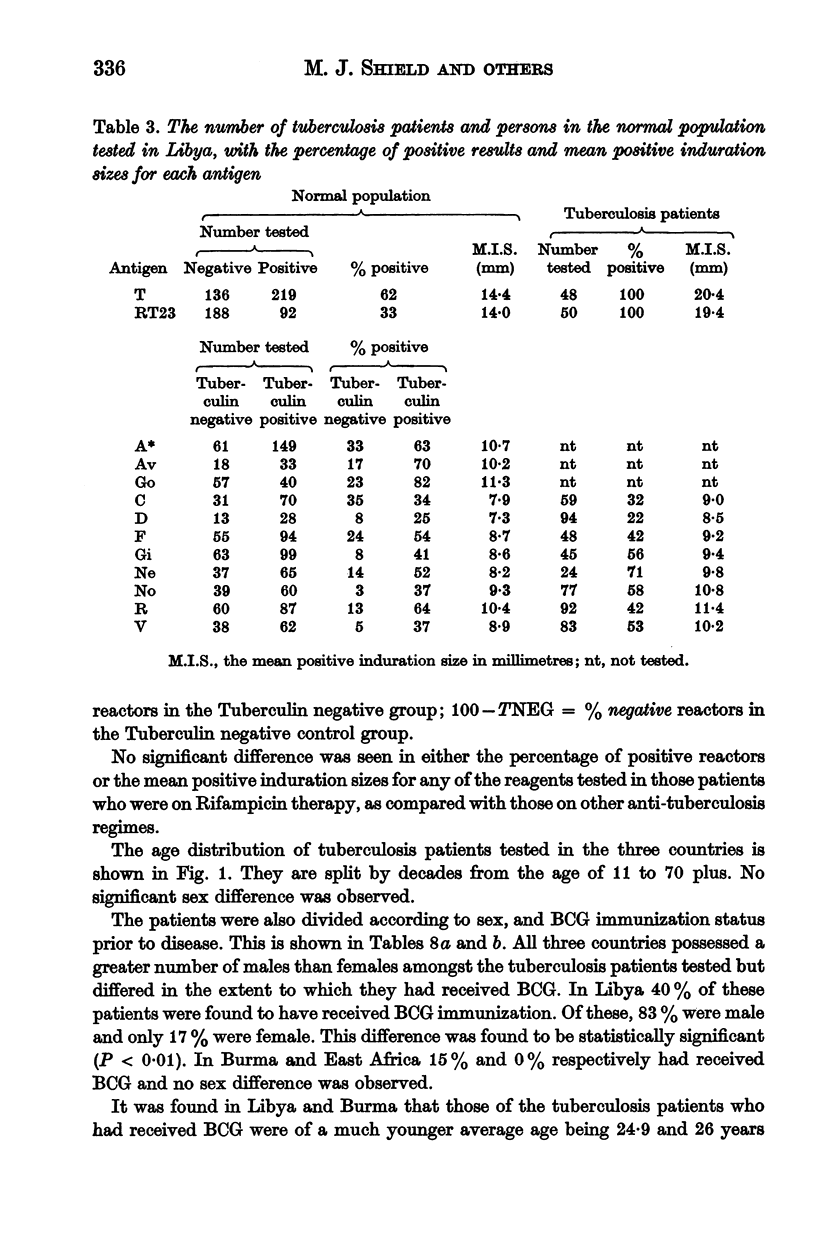
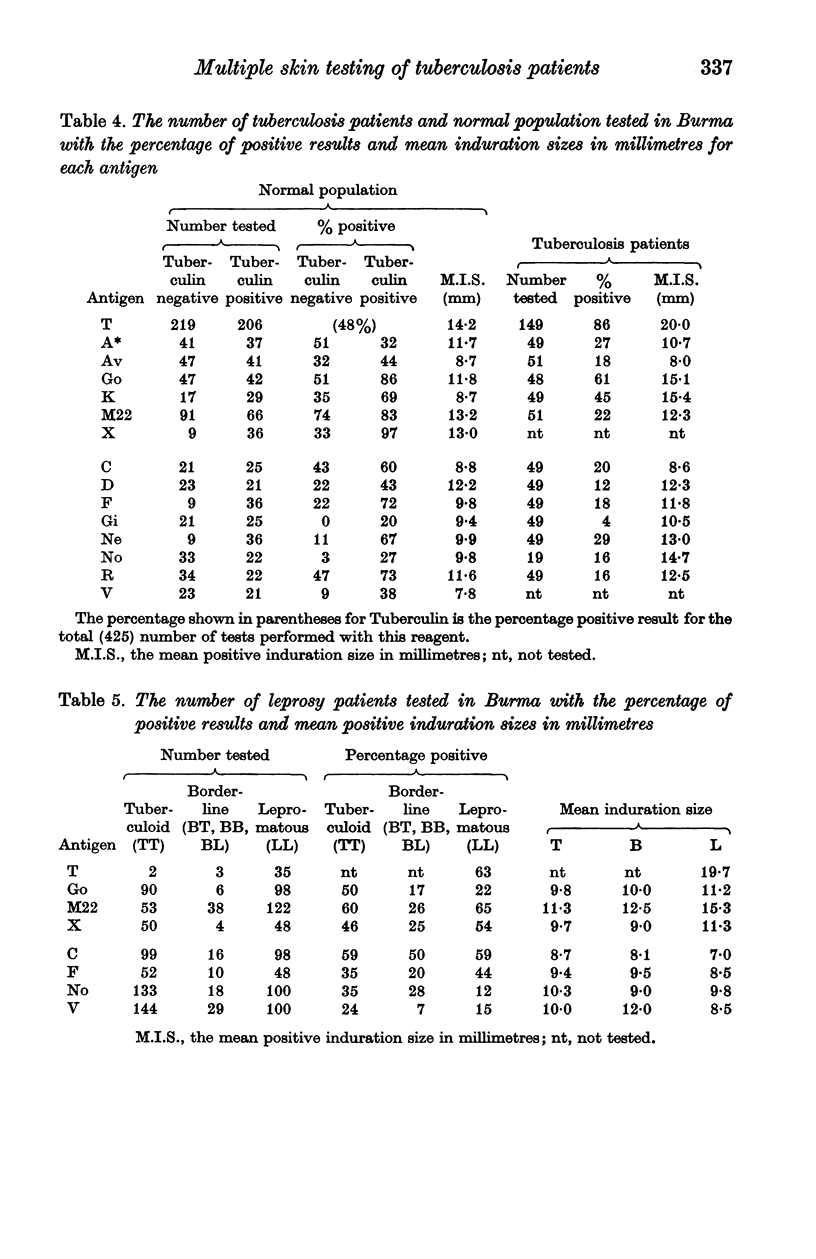
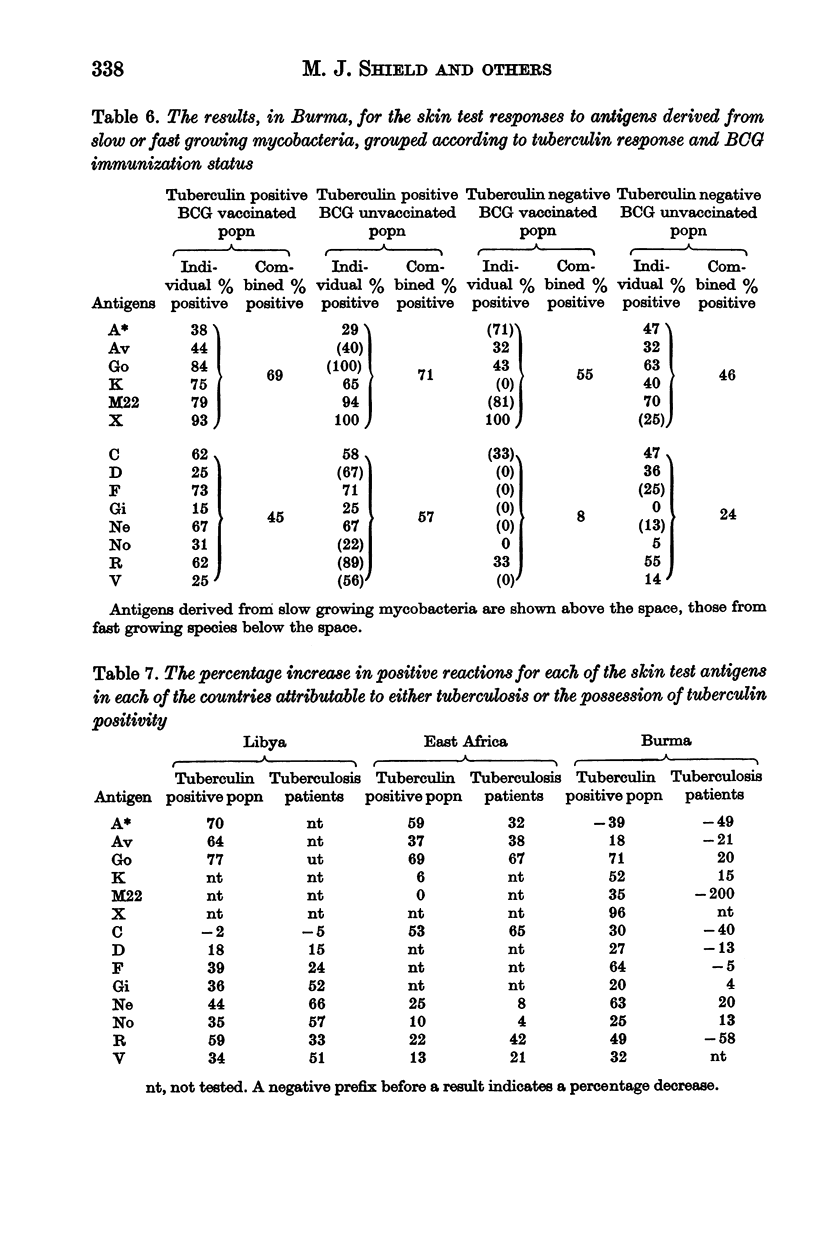
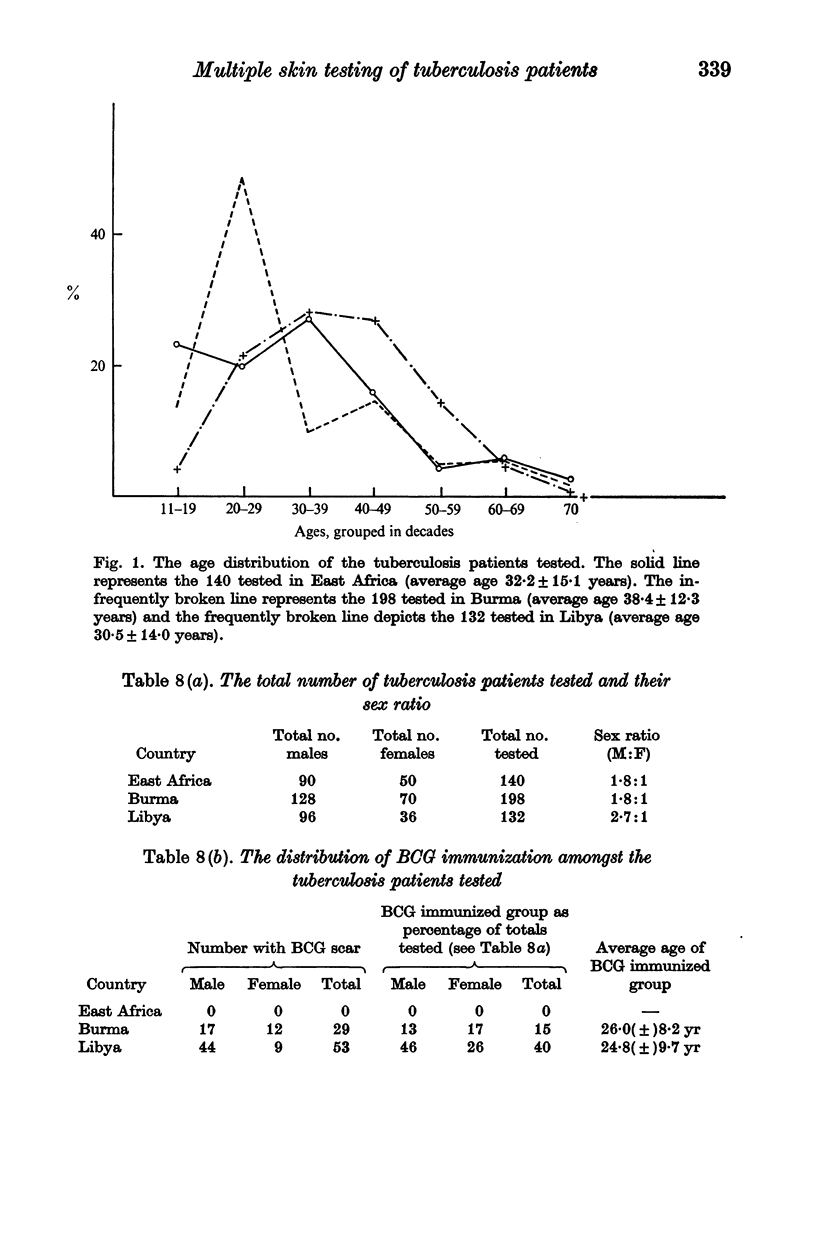


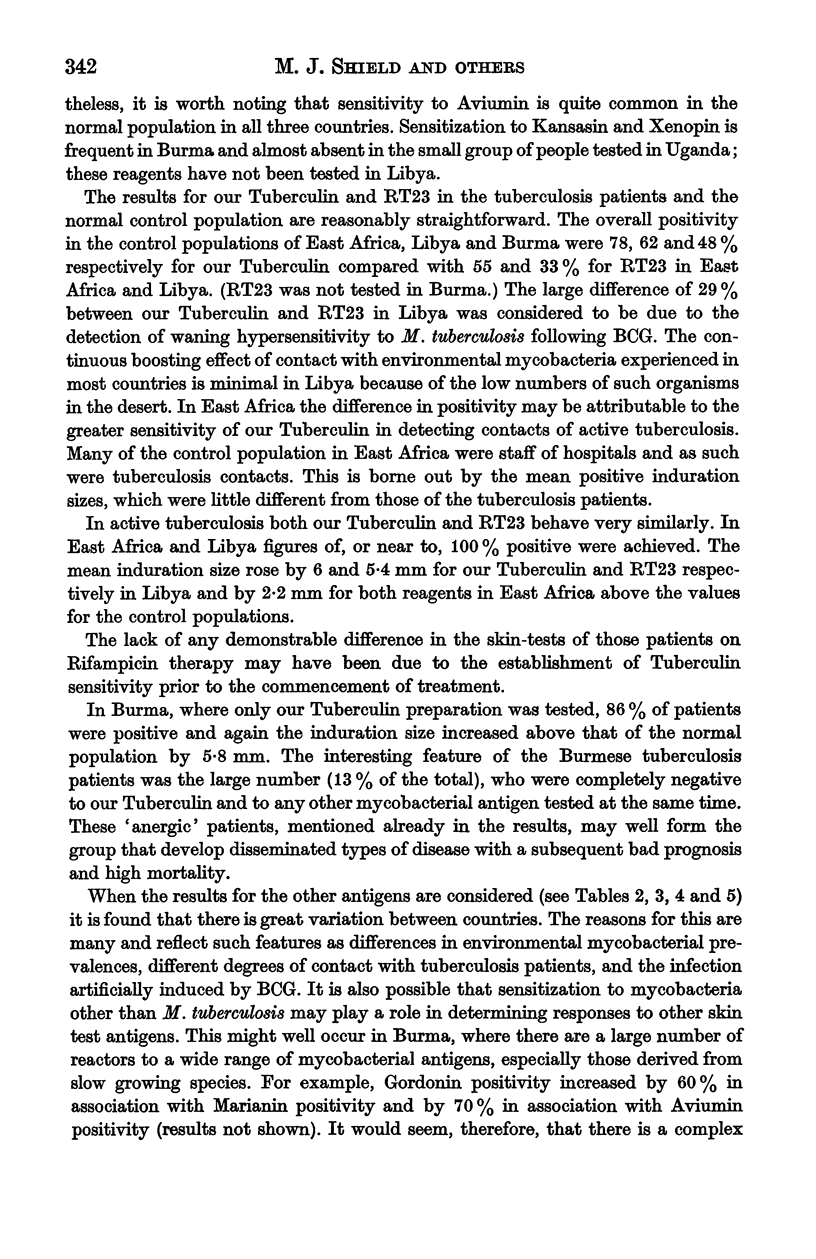
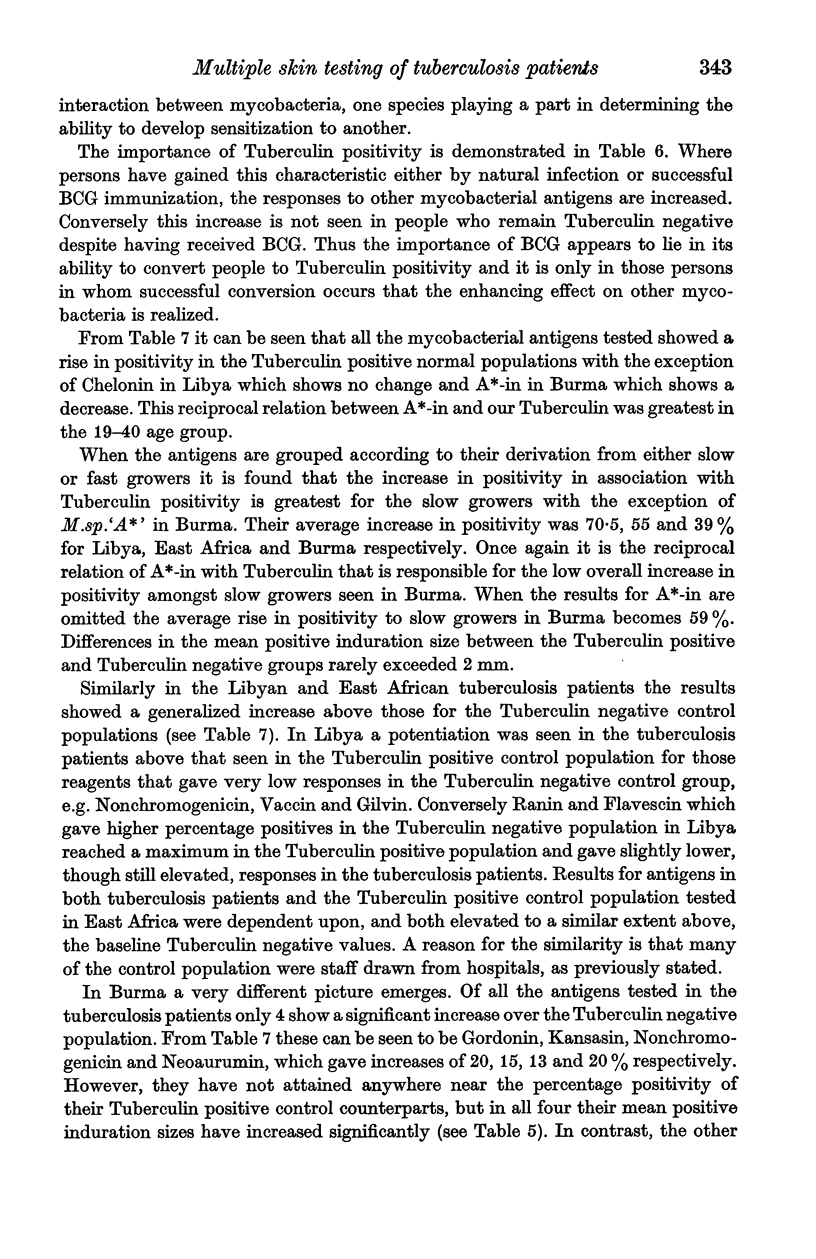
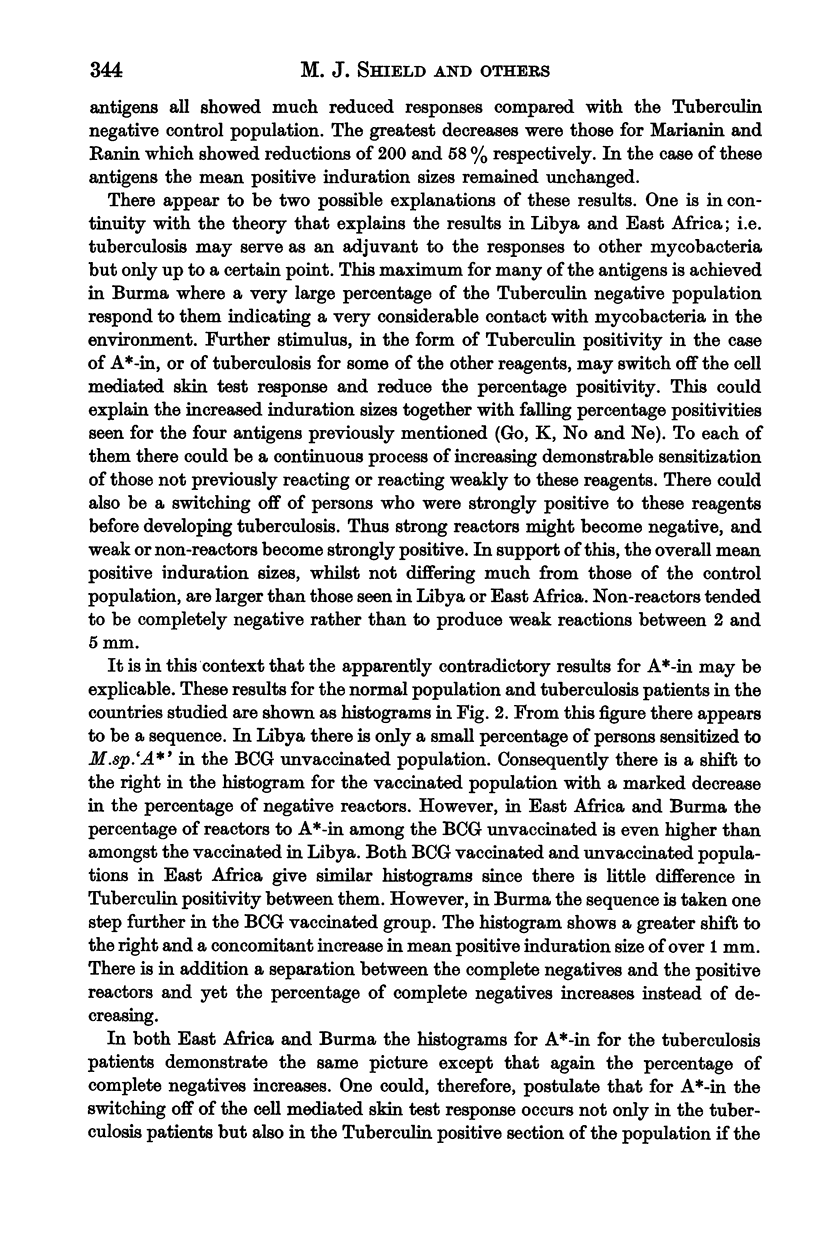
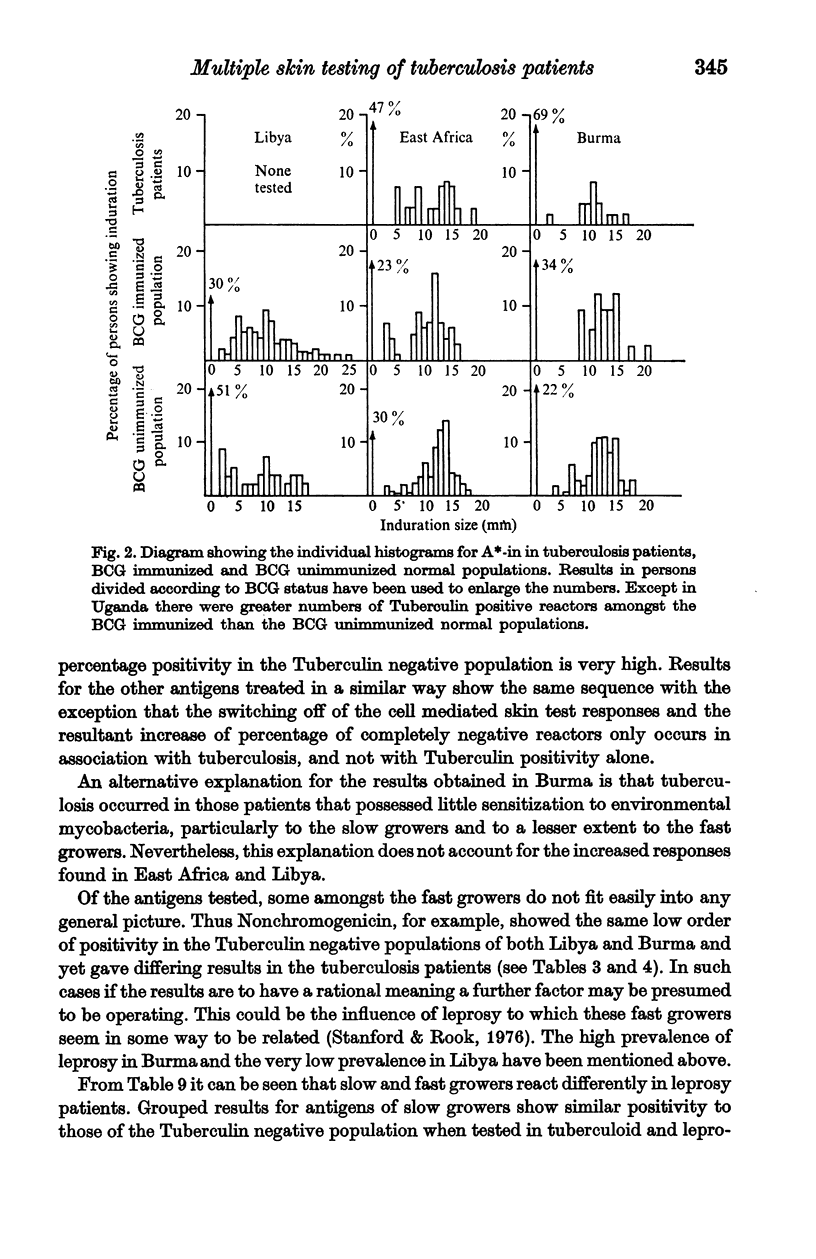
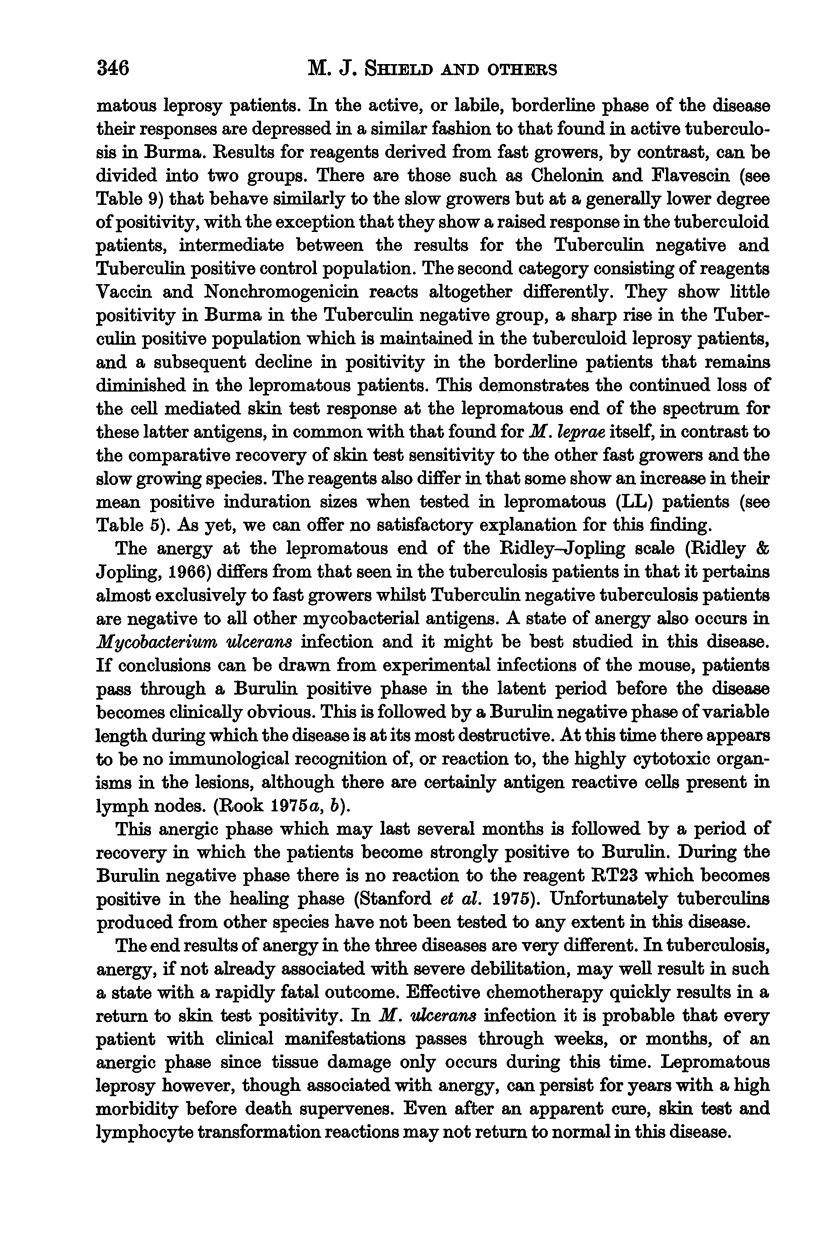


Selected References
These references are in PubMed. This may not be the complete list of references from this article.
- Paul R. C., Stanford J. L., Carswell J. W. Multiple skin testing in leprosy. J Hyg (Lond) 1975 Aug;75(1):57–68. doi: 10.1017/s0022172400047069. [DOI] [PMC free article] [PubMed] [Google Scholar]
- Paul R. C., Stanford J. L., Misljenóvic O., Lefering J. Multiple skin testing of Kenyan schoolchildren with a series of new tuberculins. J Hyg (Lond) 1975 Oct;75(2):303–313. doi: 10.1017/s002217240004732x. [DOI] [PMC free article] [PubMed] [Google Scholar]
- Păunescu E. In vivo and in vitro suppression of humoral and cellular immunological response by rifampicin. Nature. 1970 Dec 19;228(5277):1188–1190. doi: 10.1038/2281188a0. [DOI] [PubMed] [Google Scholar]
- Rook G. A. Is the macrophage the site of the immunosuppressive action of rifampicin? Tubercle. 1973 Dec;54(4):291–295. doi: 10.1016/s0041-3879(73)80032-7. [DOI] [PubMed] [Google Scholar]
- Runyon E. H. Editorials: Tuberculins and other mycobacterins. Am Rev Respir Dis. 1976 Jun;113(6):715–715. doi: 10.1164/arrd.1976.113.6.715. [DOI] [PubMed] [Google Scholar]
- Stanford J. L., Paul R. C. A preliminary report on some studies of environmental mycobacteria. Ann Soc Belg Med Trop. 1973;53(4):389–393. [PubMed] [Google Scholar]
- Stanford J. L., Revill W. D., Gunthorpe W. J., Grange J. M. The production and preliminary investigation of Burulin, a new skin test reagent for Mycobacterium ulcerans infection. J Hyg (Lond) 1975 Feb;74(1):7–16. doi: 10.1017/s0022172400046659. [DOI] [PMC free article] [PubMed] [Google Scholar]
- Stanford J. L., Rook G. A. Taxonomic studies on the leprosy bacillus. Int J Lepr Other Mycobact Dis. 1976 Jan-Jun;44(1-2):216–221. [PubMed] [Google Scholar]
- Stanford J. L., Shield M. J., Paul R. C., Khalil A., Tobgi R. S., Wallace A. The effect of desert conditions on the reactivity of Libyan schoolchildren to a range of new tuberculins. J Hyg (Lond) 1976 Aug;77(1):63–75. doi: 10.1017/s0022172400055522. [DOI] [PMC free article] [PubMed] [Google Scholar]


